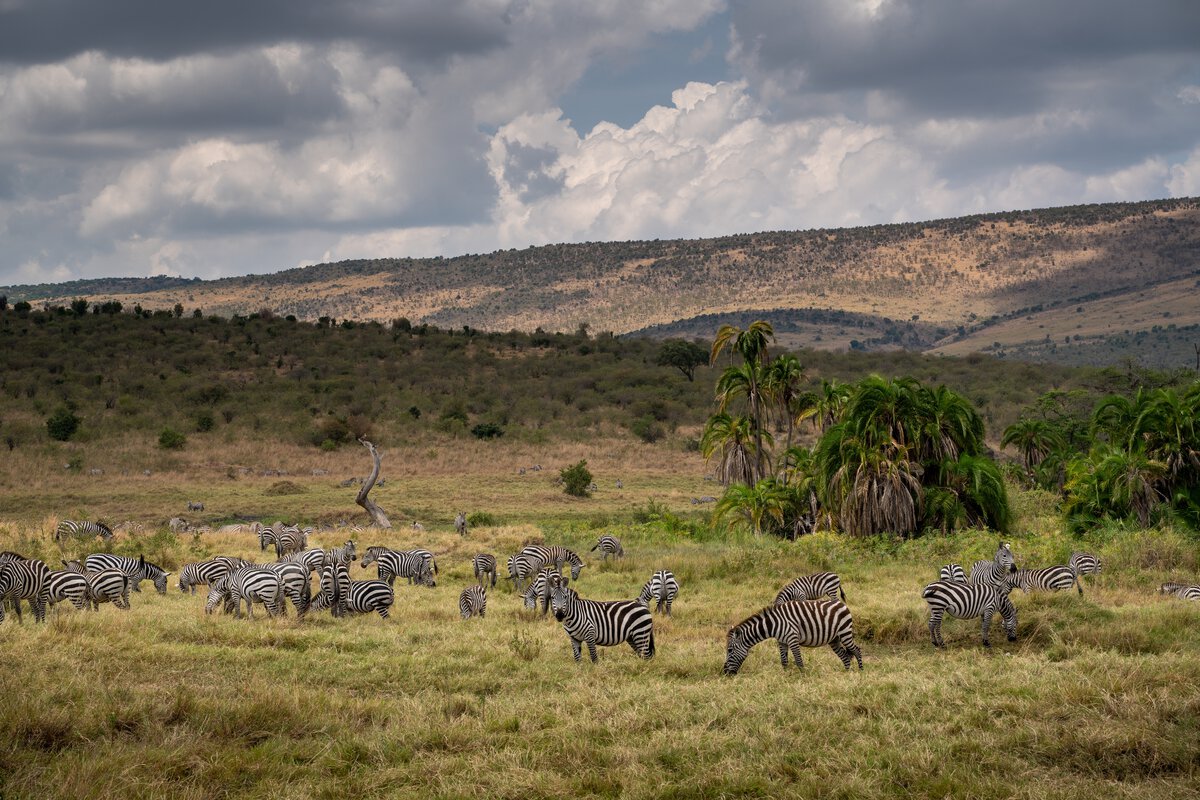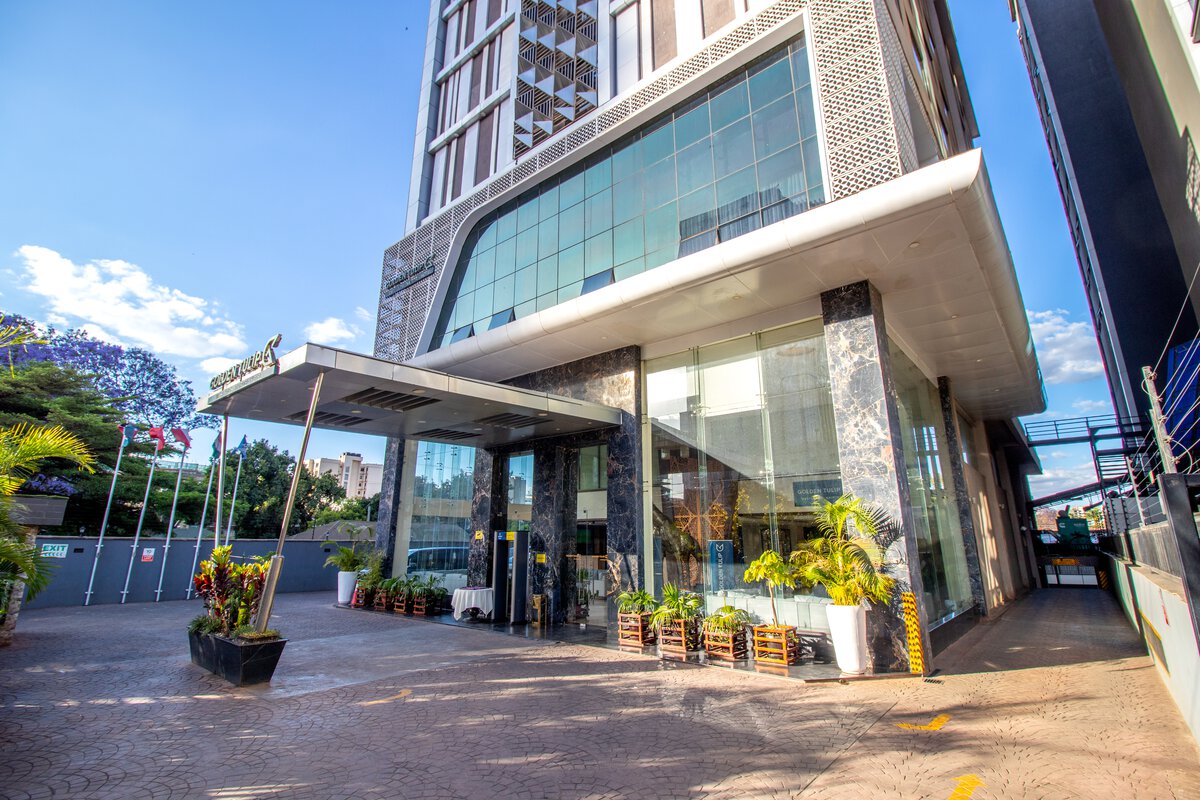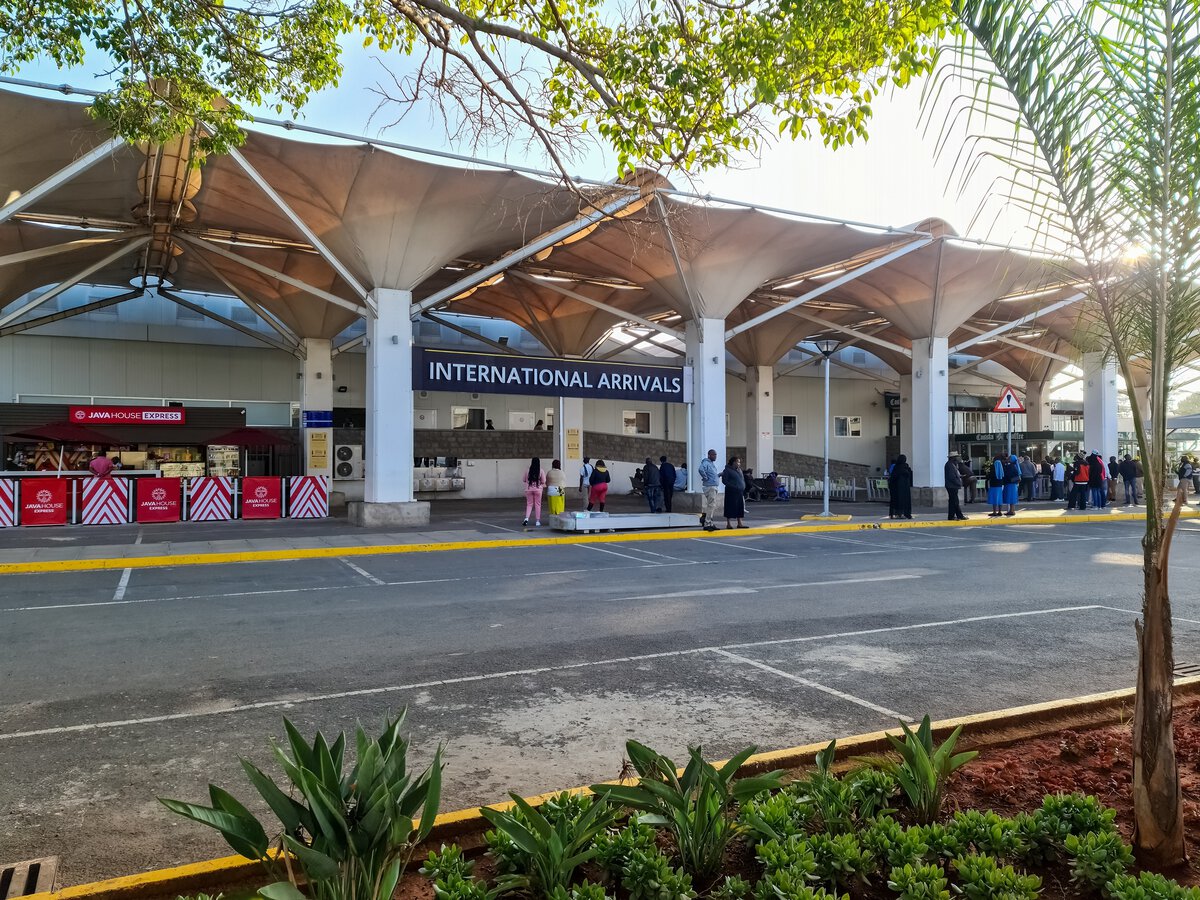July 07, 2025
Best Time to Visit Masai Mara: A Month-by-Month Safari Guide
CM Content Team


View all
140+
Resorts
July 07, 2025
CM Content Team
Located in southwestern Kenya, the Masai Mara National Reserve is one of Africa’s most iconic safari destinations. Known for its vast savannahs, abundant wildlife, and the legendary Great Migration, it offers an unmatched opportunity to witness nature in its most raw and breathtaking form. But if you're planning a trip, one essential question arises: when is the best time to visit Masai Mara?
This guide breaks down the climate, wildlife activity, and travel considerations month by month to help you choose the perfect time for your dream safari.

Masai Mara lies at an altitude of about 1,500 to 2,000 meters, giving it a pleasant, moderate climate throughout the year. There are two main seasons:
Each season offers a unique safari experience, and the best time to visit Masai Mara largely depends on what you want to see and do.
This is generally considered the best time to visit Masai Mara, especially for witnessing the Great Wildebeest Migration, one of the world’s greatest wildlife spectacles. During this period, over 1.5 million wildebeest, along with thousands of zebras and gazelles, cross over from Tanzania’s Serengeti in search of greener pastures. The sheer scale of movement, combined with dramatic predator-prey interactions, makes for unforgettable game drives. Photographers and wildlife enthusiasts from around the world flock to Masai Mara during these months for front-row seats to nature’s raw drama.
Millions of wildebeest, zebras, and gazelles migrate from Tanzania’s Serengeti to Kenya’s Masai Mara, creating one of the most awe-inspiring natural events on the planet. The dramatic river crossings at the Mara and Talek rivers are a highlight, often teeming with crocodiles and showcasing intense predator-prey interactions. Big cats, lions, cheetahs, and leopards become especially active during this time, capitalising on the abundance of prey. Following close behind are elephants, hyenas, jackals, and vultures, all contributing to a vibrant and complex ecosystem. It’s a thrilling period where every game drive holds the potential to witness the raw, untamed drama of the African wilderness unfold before your eyes.
The weather during this time is cool and dry, with daytime temperatures ranging between 20–25°C (68–77°F). Minimal rainfall makes roads more accessible and ensures smoother game drives, ideal for wildlife viewing. Early mornings and evenings can be chilly, so it’s wise to dress in layers. Clear skies create perfect lighting conditions for photography, while the dry terrain causes animals to gather around water sources, dramatically increasing the chances of close and consistent sightings.
While the short rains arrive during this period, they don’t last all day and usually come in the late afternoon or night. This is a shoulder season, meaning fewer tourists and more competitive pricing. The landscape begins to turn lush and green, making it a beautiful time for photography. Wildlife viewing remains excellent, with many animals still active and visible across the plains. It’s also an ideal time for travellers seeking a quieter, more intimate safari experience without the crowds of peak season.
Resident wildlife, including elephants, giraffes, lions, and hyenas, remain active during this period, providing plenty of game-viewing opportunities. It’s also an excellent time for birdwatching, as many migratory species arrive from Europe and Asia, adding vibrant life to the skies. The calving season for some antelope species begins, drawing predators and offering dramatic sightings of nature’s survival struggles. The mix of newborns and heightened predator activity makes for a dynamic safari experience.
Light rains refresh the landscape, turning the plains lush green and vibrant. Expect occasional showers but plenty of clear skies in between, allowing for uninterrupted safari drives. The softened light during this season adds a magical glow to sunrise and sunset game drives. It's also a great time to witness animals in a more relaxed, natural setting as they take advantage of the cooler weather and abundant foliage.
This is a dry spell between the short and long rains. The weather is warm and dry, the grass is still lush, and there are fewer tourists, making it ideal for those seeking a quieter safari experience. Wildlife visibility is excellent, with animals frequently seen grazing in open areas and predators on the prowl. The combination of newborn animals and active big cats makes for thrilling encounters. Additionally, the comfortable climate and golden landscapes provide perfect conditions for photography and extended game drives.
Many young animals are born during this time. Baby elephants, zebras, and impalas dot the landscape, adding a heartwarming element to the safari. Predators such as lions, leopards, and hyenas are actively hunting to feed their young, leading to frequent sightings of dramatic wildlife interactions. Visibility is excellent thanks to lower vegetation, making it easier to spot animals from a distance. Birdlife is also abundant, with many species nesting and displaying vibrant plumage. The balance of new life and predator activity makes this period both visually rich and action-packed for wildlife enthusiasts.
Pleasant and warm; daytime temperatures can reach up to 28°C (82°F), creating ideal conditions for full-day game drives. Clear skies with minimal rainfall mean excellent visibility and comfortable safari experiences. Early mornings and evenings are cooler, offering refreshing starts and ends to your day in the bush. The stable weather also makes it a great time for hot air balloon safaris and sunset photography.
This is Masai Mara’s wettest season, and while wildlife is still present, game drives can be more challenging due to slippery roads and overgrown vegetation. Some lodges and camps may close temporarily, and access to remote areas can be limited. However, the lush scenery, dramatic skies, and peaceful atmosphere appeal to photographers and travellers seeking solitude.
Animals are still visible but may be harder to spot due to tall grass and dense foliage. Fewer predator sightings occur compared to drier months, as many big cats become more elusive in thick vegetation. Good birdwatching continues, with vibrant nesting and breeding activity among resident and migratory species. Water sources are plentiful, so animals are more dispersed across the landscape. Despite the challenges, those with patience are often rewarded with rare and intimate wildlife encounters.
Daily rains, often heavy in the afternoon or evening, are typical during this period. The landscape becomes beautifully green and fertile, offering a stunning contrast to the drier months. Mornings are generally clear, allowing for productive early-game drives before the rains set in. The fresh air and dramatic cloudscapes also enhance the overall sensory experience of being on safari.

|
Month |
Season |
Wildlife Highlights |
Travel Tips |
|---|---|---|---|
|
January |
Dry Spell |
Predator activity, newborn animals |
Warm, clear skies |
|
February |
Dry Spell |
Big cat sightings, vibrant landscapes |
Fewer tourists |
|
March |
Long Rains |
Birding, lush greenery |
Muddy roads, budget deals |
|
April |
Long Rains |
Fewer safaris, a serene atmosphere |
Bring rain gear |
|
May |
Long Rains |
Quiet parks, good for solitude |
Lodge discounts |
|
June |
Dry Season |
Start of Great Migration |
Book early |
|
July |
Peak Season |
Wildebeest crossings, predator hunts |
Ideal safari conditions |
|
August |
Peak Season |
River crossings, clear skies |
High demand, premium rates |
|
September |
Peak Season |
Migration continues, great game drives |
Best for wildlife action |
|
October |
End of Dry |
Predator-prey drama, scenic beauty |
Good visibility |
|
November |
Short Rains |
Fewer tourists, green landscape |
Good for birders |
|
December |
Short Rains |
Calving begins; migratory birds arrive |
A mix of sun and showers |

July to October: Best for witnessing dramatic crossings and predator action.
January to March & November: Lush green backdrop, dramatic skies, and baby animals.
November to April: Peak migratory bird season, especially for European and Asian species.
March to May: Low rates on lodges and flights, with fewer crowds.
June or February: Fewer tourists (in Feb) or better views and weather (in June), depending on your preference for privacy or action.

Golden Tulip Westlands Nairobi is a well-appointed hotel offering comfort and convenience in the heart of the city. This resort in Nairobi is a great option for travellers planning a stopover before heading to Masai Mara. The hotel features modern rooms, a rooftop restaurant, and easy access to Wilson Airport. Its central location also makes it ideal for exploring Nairobi’s key attractions.
Club Mahindra Membership gives families access to over 140+ Club Mahindra resorts across India and international destinations like Southeast Asia, Dubai, and Europe. Members can enjoy well-planned holidays with flexible travel dates, curated experiences, and comfortable stays. The membership is designed to make annual vacations easy, memorable, and hassle-free. It’s ideal for those who love to explore new places with the convenience of trusted hospitality.

Many safari operators offer all-inclusive packages with private transfers, accommodations, game drives, and expert guides, ideal for a stress-free safari adventure.
Whether you fly in or drive, the journey to Masai Mara promises scenic beauty and leads to one of the most thrilling wildlife experiences on Earth.
The best time to visit Masai Mara depends entirely on what you want out of your safari, be it the thrilling drama of the Great Migration, quiet birding excursions, or budget-friendly exploration during the rains. Each season offers something special, making Masai Mara a year-round destination for those who seek the wild heart of Africa.
Whether you’re drawn by the thundering herds of wildebeest or the gentle rustle of acacia leaves in the wind, Masai Mara delivers an unforgettable, soul-stirring adventure, no matter the month you choose to visit.
Mahindra Holidays & Resorts India Ltd. (MHRIL), a part of Leisure and Hospitality sector of the Mahindra Group, offers quality family holidays primarily through vacation ownership memberships and brings to the industry values such as reliability, trust and customer satisfaction. Started in 1996, the company's flagship brand ‘Club Mahindra’, today has over 300,000 members , who can holiday at 140+ resorts in India and abroad.
We use cookies to personalise content and to provide you with an improved user experience.By Continuing to browse this site you consent to the use of cookies.Please visit our cookie policy for further details.

Welcome to ClubMahindra.com In order to provide a personalised experience for you, we use cookies to enable some website functionality. Cookies help us see which articles most interest you; allow you to easily share articles on social media channels; permit us to deliver content personalised to your interests and locations; along with many other site benefits. For more information, please review our Cookie Policy
When you visit any website, it may store or retrieve information on your browser, mostly in the form of cookies. This information might be about you, your preferences or your device and is mostly used to make the site work as you expect it to. The information does not usually directly identify you, but it can give you a more personalized web experience. Because we respect your right to privacy, you can choose not to allow some types of cookies. Click on the different category headings to find out more and change our default settings. However, blocking some types of cookies may impact your experience of the site and the services we are able to offer.
Because we respect your right to privacy, you can choose not to allow some types of cookies and you have the right to withdraw your consent by send a mail to email id [email protected]
These cookies are essential in order to enable you to move around the site and use its features, such as accessing secure areas of the site. Without these cookies, services you have asked for cannot be provided.
These cookies allow us to employ data analytics so we can measure and improve the performance of our site and provide more relevant content to you. These cookies don't collect information that identifies a visitor down to an individual level that is available to us. These cookies are not passing personally identifiable information to any external third party other than in limited cases when we engage a service provider to act on our behalf but who is then unable to use the data for their own purposes.
Performance cookies are generally third-party cookies from vendors we work with or who work on our behalf that collect information about your visit and use of the Club Mahindra website, for instance which pages you visit the most often, and if you get error messages from web pages. These cookies don't collect information that identifies a visitor. All information these cookies collect is anonymous and is only used to improve your overall experience on how the website works. Third party vendors may have access to this data and may use it to improve their overall services and offerings.
Functionality cookies allow a site to remember choices you make (such as your user name, language or the region you are in) and provide more enhanced, personal features. These cookies cannot track your browsing activity on other websites. They don't gather any information about you that could be used for advertising or remembering where you've been on the Internet outside our site.
Third-party advertising and social media cookies are used to (1) deliver advertisements more relevant to you and your interests; (2) limit the number of times you see an advertisement; (3) help measure the effectiveness of the advertising campaign; and (4) understand people's behaviour after they view an advertisement. They are usually placed on behalf of advertising networks with the site operator's permission. They remember that you have visited a site and quite often they will be linked to site functionality provided by the other organization. This may impact the content and messages you see on other websites you visit. If you do not allow these cookies you may not be able to use or see certain these sharing tools content on our website.